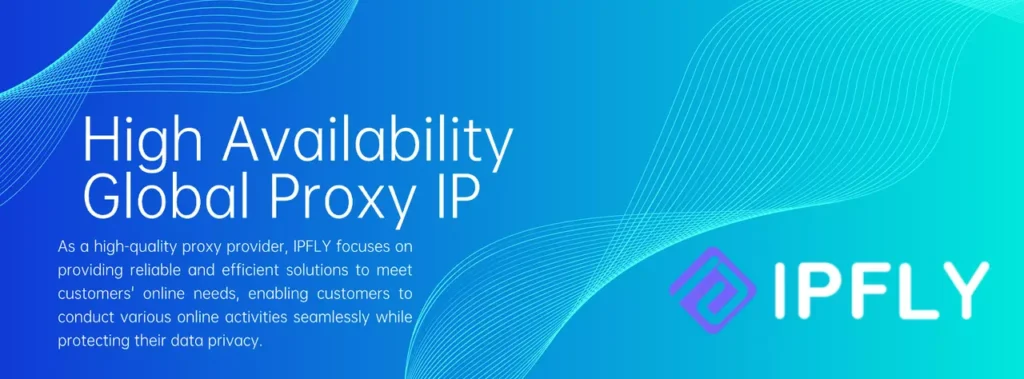In a world driven by data, web scraping has become an indispensable skill for businesses, marketers, and researchers. The ability to automatically extract public information from the web provides a powerful competitive edge. However, the success of any data collection project hinges on choosing the right tool for the job. This guide ranks the best web scraping tools, from powerful programming frameworks to user-friendly visual software, helping you select the perfect solution for your needs.

The Unbreakable Foundation of Every Scraper
Before we rank the tools, we must establish the single most important component of any successful scraping operation: the proxy network. A scraper without a high-quality proxy is destined to fail. Websites deploy sophisticated anti-bot systems that primarily target your IP address. If you send too many requests from one IP, you will be blocked.
This is why a professional-grade proxy network is not an option—it is the foundation. It provides the anonymity and scale necessary for any serious project.
The IPFLY Advantage: The Bedrock of Success
A top-tier provider like IPFLY is the key to unlocking the full potential of any scraping tool. Its strength lies in providing a massive, ethically sourced pool of residential proxies. This ensures your scraper’s requests are seen as genuine human traffic, leading to an industry-leading success rate and a dramatic reduction in blocks and CAPTCHAs. Before choosing your software, secure your foundation with IPFLY.
Ranking the Best Tools for Web Scraping
With a solid proxy foundation in place, you can now choose your scraping software. Here are the top tools, ranked for different needs and skill levels.
#1: Python with Libraries (The Ultimate All-Rounder)
For sheer power, flexibility, and community support, nothing beats Python. It’s the undisputed king of data extraction.
Best For: Developers who need complete control and the ability to tackle any scraping challenge, from simple websites to complex data processing pipelines.
Massive Ecosystem: Leverage legendary libraries like Requests for fetching web pages and BeautifulSoup for parsing HTML with ease.
Infinite Flexibility: Can be integrated with databases, data analysis tools, and machine learning frameworks.
Unparalleled Support: The largest community in the data science world means a solution to any problem is just a search away.
The Bottom Line: If you’re serious about data extraction, learning Python is the single best investment you can make.
#2: Scrapy (The High-Performance Framework)
When you need to scrape a massive number of pages as quickly as possible, you need a specialized framework. Scrapy is built for exactly that.
Best For: Large-scale, high-volume data collection projects that demand maximum speed and efficiency.
Built for Speed: Its asynchronous architecture allows it to handle many requests in parallel, making it significantly faster than standard scripts.
All-in-One Framework: Comes with built-in functionalities for handling cookies, sessions, and following links.
Extensible: A robust middleware system makes it easy to integrate services, such as a rotating proxy manager.
The Bottom Line: For building industrial-strength web crawlers, Scrapy is the professional’s choice.
#3: Headless Browsers – Playwright & Puppeteer (The JavaScript Masters) 🤖
Modern websites are dynamic, loading their most valuable data with JavaScript. Headless browsers are the only tools that can reliably scrape this content.
Best For: Scraping Single Page Applications (SPAs), infinite scroll feeds, and any website that requires user interaction (like clicking buttons) to reveal data.
True Browser Emulation: They control a real browser (like Chrome or Firefox) in the background, executing all JavaScript to see the final, fully-rendered page.
Interaction Capability: Can be programmed to scroll, click, and wait for elements to load, mimicking human behavior.
Modern APIs: Offer powerful and intuitive commands for complex automation tasks.
The Bottom Line: For the modern, interactive web, a headless browser is not just an option—it’s a requirement.
#4: No-Code Visual Scrapers (The Accessible Option)
For those without a programming background, visual scraping tools provide a user-friendly, point-and-click interface to extract data.
Best For: Marketers, researchers, and business users who need to collect data without writing a single line of code.
Ease of Use: A simple browser extension or desktop app lets you click on the data you want to extract, and the tool builds the scraper for you.
Rapid Deployment: You can build and run a scraper for a simple site in just a few minutes.
Cloud-Based Options: Many offer cloud services that can run your scrapers for you on a schedule.
The Bottom Line: For quick, straightforward data collection tasks, no-code tools are an incredibly efficient solution.

The Winning Combination
The “best” web scraping tool is the one that best fits your project’s complexity and your own technical skills. However, the success of every tool on this list—from a simple Python script to a complex Scrapy crawler—is fundamentally dependent on the quality of the proxy network behind it. By combining a top-tier tool with the power and reliability of IPFLY’s residential proxies, you create a professional-grade data extraction engine capable of tackling any challenge.
Craving exclusive proxy strategies and professional service recommendations? First visit IPFLY.net, then join the IPFLY Telegram community—here, you’ll find the latest industry updates and practical tips to help you easily master the core secrets of proxy usage. Come now!


